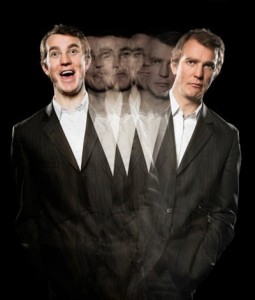 Bipolar disorder is a type of medical condition that usually causes extreme changes in mood. Once known as manic depression, the term can actually apply to several different types of disorders. The main difference between those disorders is whether the patient experiences more periods of mania or depression. Patients typically begin exhibiting symptoms during their teen years, but some may have few or no symptoms until adulthood. Loved ones of those suffering from bipolar disorder may want to learn more about the disease and how doctors treat it.
Bipolar disorder is a type of medical condition that usually causes extreme changes in mood. Once known as manic depression, the term can actually apply to several different types of disorders. The main difference between those disorders is whether the patient experiences more periods of mania or depression. Patients typically begin exhibiting symptoms during their teen years, but some may have few or no symptoms until adulthood. Loved ones of those suffering from bipolar disorder may want to learn more about the disease and how doctors treat it.
Manic Periods
Frequent mood swings are a common symptom of bipolar in patients. Patients often cycle back and forth between mania and depression, but most patients will experience one type of cycle more than the other. A manic period can last for several days or weeks. Patients feel extremely euphoric and have a hard time focusing their attention on one single thing or task. They often have issues with sitting still, they usually find that their thoughts constantly jump and they talk faster. Some bipolar patients may also engage in dangerous behaviors while in a maniac episode, including engaging in unsafe sex or using illegal drugs.
Depressive Episodes
A depressive episode is the exact opposite of a manic episode. Those suffering from depression often experience changes in mood, appetite, personal hygiene and even interests. They may prefer spending the day in bed or in their rooms rather than go to school or work or spend time with loved ones. Many people suffering from depression also experience changes in their sleep. They may suffer from insomnia or sleep for 10 to 12 hours or longer every day. A depressive episode can last anywhere from a few weeks to one year or longer when left untreated.
Types of Disorders
According to the National Institute on Mental Health, doctors define the disorder as type I, type II, non-specified, cyclothymia or rapid cycling. Rapid cycling bipolar is a type of disorder where patients experience intense mood swings for a minimum period of one year. This can include both manic and depressive episodes and episodes of normal behavior. Cyclothymia is a disorder where an individual experiences mood swings that are not manic or depressive. The NIMH defines type I as a disorder characterized by manic periods of one week or longer and depressive episodes of two weeks or more and type II as a disorder characterized by both types of mood swings.
Featured Programs
Treating Bipolar
Those diagnosed with bi-polar disorder, and their loved ones, often want to know how doctors treat the disease. Treatment often includes a combination of both psychotherapy and prescription drugs. Those who experience more manic periods may find antipsychotics helpful, while those who experience more depressive periods often find antidepressants more helpful. Many patients may also engage in some lifestyle changes. Abstaining from alcohol and drugs is the first step, as those substances can worsen mood swings and make those swings occur more frequently. Patients also learn how to watch for signs of a mood swing before it occurs.
People sometimes think that those suffering from bipolar experience mood swings daily, but the disorder actually causes episodes of depression or mania that last for days or weeks. Those exhibiting the common symptoms of bipolar disorder should see a doctor and receive a diagnosis before beginning treatment.
Related Resources:
